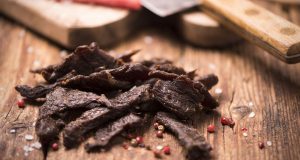Vacuum Insulated Mean
What Does Vacuum Insulated Mean? Stainless steel drinkware isn’t a passing fad. It is a trend toward considerably superior drinkware versus plastic drinkware. It’s not just a passing craze. Stainless steel tumblers and water bottles have grown in popularity due to their ability to keep liquids hot or cold for extended periods of time.
All famous name brand stainless steel tumblers, such as RTIC or Yeti, as well as many high-quality off-brand tumblers and water bottles, use vacuum sealed double wall insulation technology.
All vacuum-sealed glasses and bottles are double-walled; however, all double-walled tumblers and bottles are NOT vacuum-sealed.
What Does Vacuum Sealed Insulation Mean
But what exactly does “vacuum sealed” imply? It is not only double-wall, with a separate layer from the interior and exterior, but it also features a layer of space (insulation) between the two airtight layers (sealed)
With the air suck from between the two layers, heat or cold is little transferred to the following layer, allowing the drinking vessel to maintain the correct temperature.
Don’t be fooled by double-walled tumblers or mugs made of plastic or other materials that aren’t vacuum sealed. Most plastic double-walled drinkware contains either air or foam insulation between the two walls, although neither is as efficient as vacuum insulation.
What Is Better Than Vacuum Sealed And Vacuum Insulated
Copper vacuum insulate is the next step up from vacuum sealed. This manufacturing method provides a copper coating to the innermost layer’s inner surface. To be clear, the copper lining is on the other side of the bottle from where your drink will come into touch.
This copper lining helps to transfer heat/cold more uniformly across the whole surface. It allows to keep its temperature for considerably longer periods of time than normal vacuum sealed stainless steel.
The wonderful thing about the copper lining is that the cost difference between having it and not having it is negligible, so if you want the optimum temperature retention, go with the copper vacuum sealed alternatives.
Considerations For Vacuum Sealed And Vacuum Insulated
Because there is no counterbalancing pressure from within, vacuum insulation panels or containers must be of materials that are stiff and strong enough to withstand the pressure from outside.
Aside from thermos and Dewar flasks, vacuum shielding is use in some high-end refrigerator and freezer units, as well as containers for cold shipment, however vacuum insulation panels are also use in infrastructure design.
Vacuum Sealed Bottles, Cups And Containers And Vacuum Insulated
Vacuum sealing has been around for quite some time. The underlying principle behind vacuum sealing is that removing any air from a container limits degradation as well as heat transmission. Initially, this was accomplish using food containers and bags. What Does Vacuum Insulated Mean?
When food is devoid of air, it lasts considerably longer and tastes a lot better when cooked. As a result, food businesses and merchants began using vacuum sealed containers and bags to keep their items fresh.
The fundamental objective of vacuum technology in water bottles, tumblers, and other containers is insulation rather than preservation. In addition to insulate, vacuum containers depend on the vacuum of air in between two or more layers.
When there is a vacuum in space, there are no molecules through which heat may travel. As a result, the items within retain their original temperature for a reasonably lengthy period of time.
Higher grade brands and items are usually vacuum seal. Materials and processes are typically more expensive. And depending on how the producer wants the bottle to operate, specific design and production methods may be helpful. What Does Vacuum Insulated Mean?
Vacuum Technology In Different Materials
To inhibit conductive and convective heat transmission, vacuum technology is utilise to create high-performance thermal insulation.
A vacuum is often regard as the greatest known insulator due to its complete lack of atoms.
The use of multi-layer insulation (MLI) further decreases radiation heat transmission. This results in Vacuum Super Insulation, which provides even better thermal performance. Vacuum Super Insulation with unique MLI, like all Insulin products, can function in high-temperature conditions up to 1000°C.
Some insulating materials, such as plastic foam, include trapped air bubbles that increase their insulating qualities. Vacuum insulation, on the other hand, relies on a vacuum – a region that has been almost totally devoid of air – to limit the propagation of heat. The most frequent everyday example is a thermos or vacuum flask.
Conclusion
The vacuum is the true barrier; because no air molecules or other molecules are present. No heat transfer can occur, allowing the contents of the bottle to remain at the same or close to its temperature for lengthy periods of time. Search the web and reference buyer reviews before making your decision.




